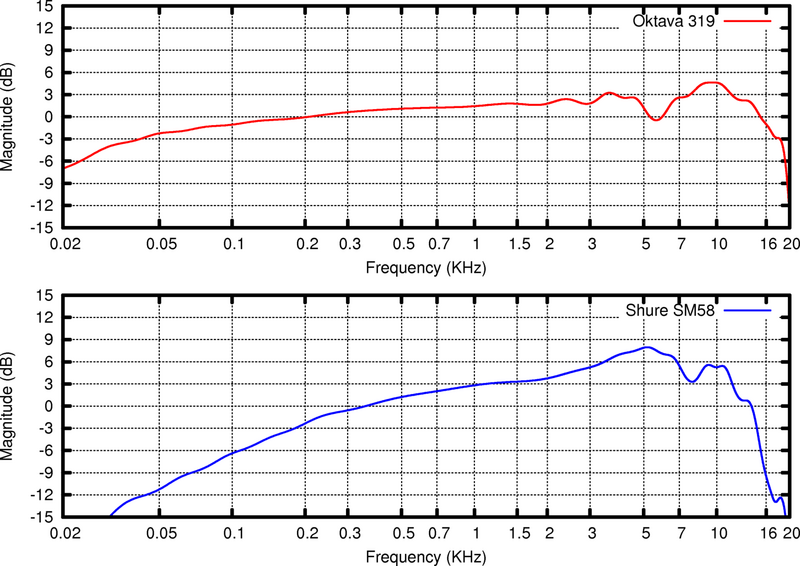Microphone Responses and Measurements
Microphones have various properties that determine how they interact with sound.
There are five key properties to consider, including:
Frequency Response
The frequency response is the output level or sensitivity of a microphone over its operating range from the lowest to highest frequency.
A frequency response curve is a graphical representation of how a microphone will respond in the audio spectrum and so, how it will affect a signal’s overall sound timbre.
On a frequency response curve graph, the x-axis represents the signals measured frequency and relative response in decibels (dB) on the y-axis.
Microphone manufacturers list the frequency response, such as 20-20,000 Hz, and usually provide a frequency response curve graph.

A microphone that has a flat frequency response produces equal output at all frequencies and is known as a flat response microphone. On the graph, the curve will be drawn as a flat line.
Flat response microphones are usually desirable for recording natural instruments such as a piano or acoustic guitar.
A microphone that has a varied frequency response produces a differing output of frequencies and is known as a shaped response microphone. On the graph, the curve will contain peaks and troughs.
A shaped response microphone is designed to enhance or detract certain applications. For example, a microphone may have a peak around 5 kHz to increase the presence of a vocal.
Shaped response microphones are especially useful for reducing pickup of unwanted sound and noise outside the frequency range of an instrument.
Transient Response
A transient is a short duration, high-level peak, such as a hand-clap or snare drum hit. Transient response refers to the ability of a microphone to respond to these transient peaks.
Dynamic and condenser microphones respond differently to transients and therefore have different transient responses.
The transient response for a condenser microphone is quick and accurate due to the light mass of the diaphragm.
The transient response for a dynamic microphone tends to be slow due to its heavy diaphragm and coil of wire, causing a less accurate recording.
Generally, a Dynamic microphone’s transient response is not as efficient as the transient response of a condenser.
Condenser microphones are better suited to instruments with sharp attacks or extended high-frequency output. However, condenser microphones are not able to withstand extreme sound pressure levels due to their high sensitivity.
Dynamic microphones are able to withstand high sound pressure levels due to their robust diaphragm, making them a more suitable choice for instruments such as the kick drum or bass guitar.
Self-Noise
The self-noise is the sound level that creates the same output voltage as the inherent noise of the microphone.
Self-noise represents the lowest point of the microphone's dynamic range, and is particularly important if recording sounds that are quiet; generally, the lower the number the better the microphone.
Maximum SPL
The maximum SPL (sound pressure level) the microphone can accept is measured for particular values of total harmonic distortion. This is generally inaudible, so one can safely use the microphone at this level without harming the recording.
Dynamic Range
The dynamic range of a microphone is the difference in SPL between the noise floor and the maximum SPL. If stated on its own, for example "120 dB", it conveys significantly less information than having the self-noise and maximum SPL figures individually.
 Teach Me Audio
Teach Me Audio